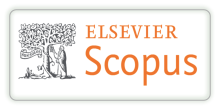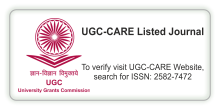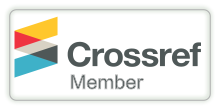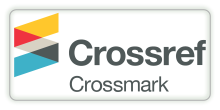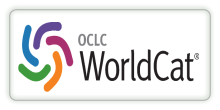ROLE OF MICROFINANCE INSTITUTIONS IN PROMOTING FINANCIAL INCLUSION
DOI:
https://doi.org/10.29121/shodhkosh.v5.i5.2024.5089Keywords:
Microfinance, Financial Inclusion, KeralaAbstract [English]
Microfinance institutions (MFIs) have emerged as crucial agents in fostering financial inclusion, particularly in developing economies. This paper explores the role of MFIs in promoting financial inclusion in Kerala, India. Through a structured survey using a 5-point Likert scale-based questionnaire administered to a randomly selected sample of 300 beneficiaries, the study examines the extent of financial inclusion facilitated by MFIs. Data analysis was carried out using EDUSTAT software, employing descriptive statistics and hypothesis testing. Results indicate that MFIs significantly contribute to enhancing access to financial services, particularly among marginalized communities. The findings underline the need for strengthening the microfinance framework to ensure sustainable inclusion. This paper highlights the importance of strategic policy initiatives and recommends avenues for future development in the sector.
References
Demirguc-Kunt, A., Klapper, L., Singer, D., Ansar, S., & Hess, J. (2018). The Global Findex Database 2017: Measuring Financial Inclusion and the Fintech Revolution. World Bank Group. DOI: https://doi.org/10.1596/978-1-4648-1259-0
Ghosh, S. (2013). Microfinance and financial inclusion in India. Journal of Asian Public Policy, 6(2), 129-148.
Ledgerwood, J. (1999). Microfinance Handbook: An Institutional and Financial Perspective. World Bank Publications. DOI: https://doi.org/10.1596/978-0-8213-4306-7
Littlefield, E., Morduch, J., & Hashemi, S. (2003). Is microfinance an effective strategy to reach the Millennium Development Goals? Focus Note, 24, 1-11.
NABARD. (2005). Status of Microfinance in India. National Bank for Agriculture and Rural Development.
Reddy, C. S. (2012). Self-Help Groups in India: A Study of the Lights and Shades. APMAS.
Sarma, M. (2008). Index of Financial Inclusion. Working Paper No. 215. Indian Council for Research on International Economic Relations.
Srinivasan, N. (2009). Microfinance India: State of the Sector Report 2008. Sage Publications India. DOI: https://doi.org/10.4135/9788132108115
Bhat, M. A., & Sarda, P. (2015). Role of microfinance institutions in promoting entrepreneurship among marginalized communities: A case study from Karnataka. International Journal of Business and Administration Research Review, 2(11), 45–49.
Garikipati, S. (2013). Microcredit and women’s empowerment: Have we been looking at the wrong indicators? Oxford Development Studies, 41(1), 53–75. DOI: https://doi.org/10.1080/13600818.2012.744387
Khandker, S. R., & Samad, H. A. (2013). Microfinance growth and poverty reduction in Bangladesh: What does the longitudinal data say? World Bank Economic Review, 27(3), 529–553.
Kumar, P., & Sharma, A. (2011). Microfinance and rural poor: A case study of microfinance institutions in India. International Journal of Research in Commerce, IT and Management, 1(3), 145–149.
Nair, T. S. (2001). Institutionalizing microfinance in India: An overview of strategic issues. Economic and Political Weekly, 36(6), 399–404.
Seibel, H. D. (2005). SHG banking: A financial technology for reaching marginal areas and the very poor. Savings and Development, 29(2), 247–262.
Sriram, M. S. (2007). Productivity of rural credit: A review of issues and some recent literature. Indian Journal of Agricultural Economics, 62(1), 1–21.
Swain, R. B., & Varghese, A. (2009). Does self-help group participation lead to asset creation? World Development, 37(10), 1674–1682. DOI: https://doi.org/10.1016/j.worlddev.2009.03.006
Brau, J. C., & Woller, G. M. (2004). Microfinance: A comprehensive review of the existing literature. Journal of Entrepreneurial Finance and Business Ventures, 9(1), 1–26. DOI: https://doi.org/10.57229/2373-1761.1074
Dasgupta, R. (2005). Microfinance in India: Empirical evidence, alternative models, and policy imperatives. Economic and Political Weekly, 40(12), 1229–1237.
Harper, M. (2002). Promotion of self-help groups under the SHG-bank linkage program in India. World Bank Publications.
Imai, K. S., Gaiha, R., Thapa, G., & Annim, S. K. (2012). Microfinance and poverty—a macro perspective. World Development, 40(8), 1675–1689. DOI: https://doi.org/10.1016/j.worlddev.2012.04.013
Kabeer, N. (2005). Is microfinance a 'magic bullet' for women’s empowerment? Analysis of findings from South Asia. Economic and Political Weekly, 40(44-45), 4709–4718.
Morduch, J. (1999). The microfinance promise. Journal of Economic Literature, 37(4), 1569–1614. DOI: https://doi.org/10.1257/jel.37.4.1569
Nandhi, M. A. (2012). Effects of mobile banking on the savings practices of low income users: The Indian experience. Institute for Money, Technology and Financial Inclusion Working Paper, 8, 1–18.
Rahman, A. (1999). Micro-credit initiatives for equitable and sustainable development: Who pays? World Development, 27(1), 67–82. DOI: https://doi.org/10.1016/S0305-750X(98)00105-3
United Nations. (2015). Transforming our world: The 2030 Agenda for Sustainable Development. United Nations.
Ghate, P. (2007). Consumer protection in Indian microfinance: Lessons from Andhra Pradesh. Economic and Political Weekly, 42(13), 1176–1184.
Kudumbashree Mission. (2020). Annual Report 2019-2020. Government of Kerala.
Yunus, M. (1999). Banker to the poor: Micro-lending and the battle against world poverty. PublicAffairs.
(Plus the ones you already had: NABARD (2005), Littlefield et al. (2003), Reddy (2012).)
Joshi, A., Kale, S., Chandel, S., & Pal, D. K. (2015). Likert scale: Explored and explained. British Journal of Applied Science & Technology, 7(4), 396–403. DOI: https://doi.org/10.9734/BJAST/2015/14975
Tavakol, M., & Dennick, R. (2011). Making sense of Cronbach’s Alpha. International Journal of Medical Education, 2, 53–55. DOI: https://doi.org/10.5116/ijme.4dfb.8dfd
Kabeer, N. (2005). Is microfinance a 'magic bullet' for women’s empowerment? Analysis of findings from South Asia. Economic and Political Weekly, 40(44-45), 4709–4718.
Littlefield, E., Morduch, J., & Hashemi, S. (2003). Is microfinance an effective strategy to reach the Millennium Development Goals? Focus Note, 24, 1–11.
Ghosh, S. (2013). Microfinance and financial inclusion in India. Journal of Asian Public Policy, 6(2), 129–148.
Downloads
Published
How to Cite
Issue
Section
License
Copyright (c) 2024 Dr. M Josephine Renjith, Sindoora S

This work is licensed under a Creative Commons Attribution 4.0 International License.
With the licence CC-BY, authors retain the copyright, allowing anyone to download, reuse, re-print, modify, distribute, and/or copy their contribution. The work must be properly attributed to its author.
It is not necessary to ask for further permission from the author or journal board.
This journal provides immediate open access to its content on the principle that making research freely available to the public supports a greater global exchange of knowledge.





